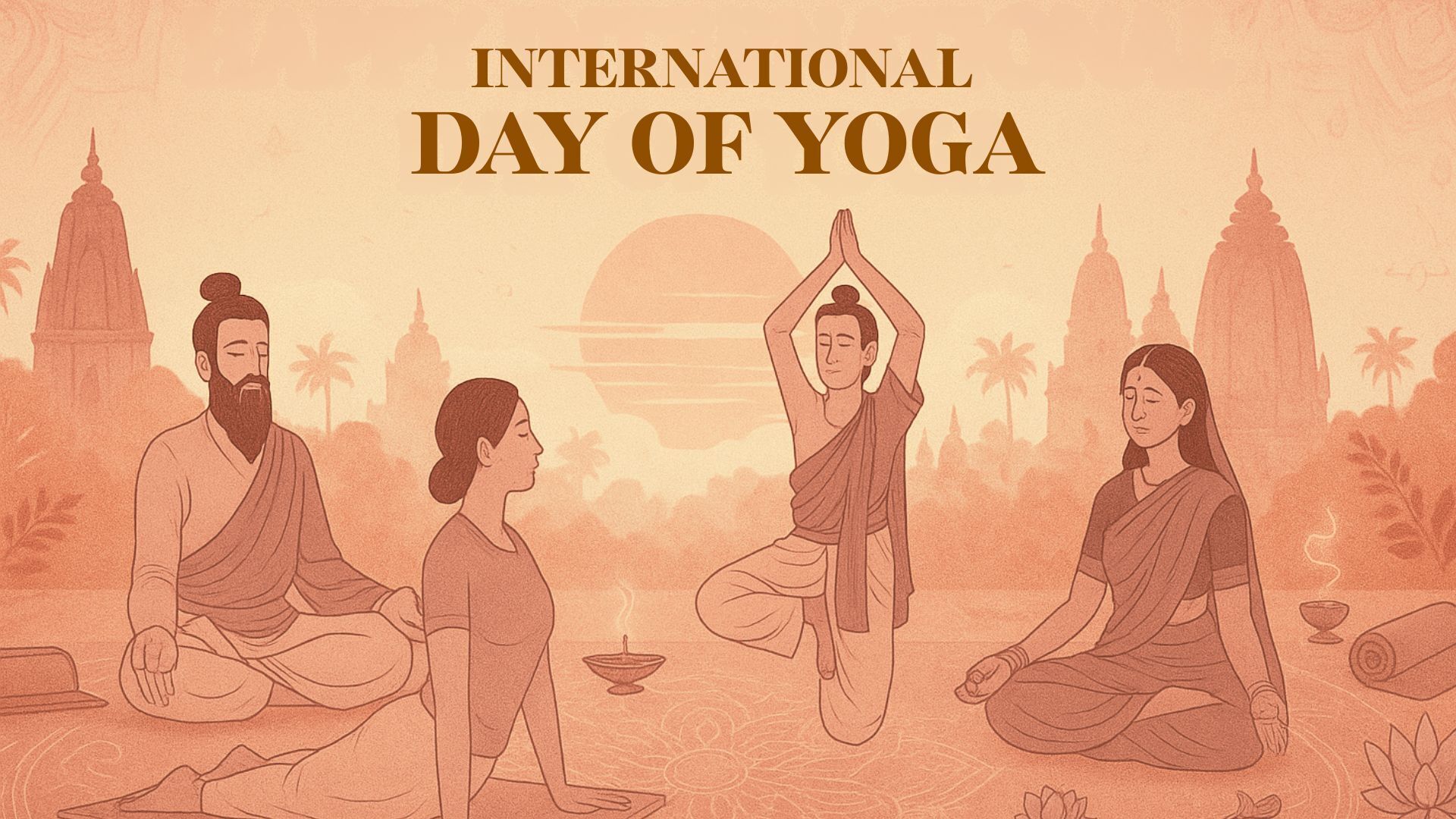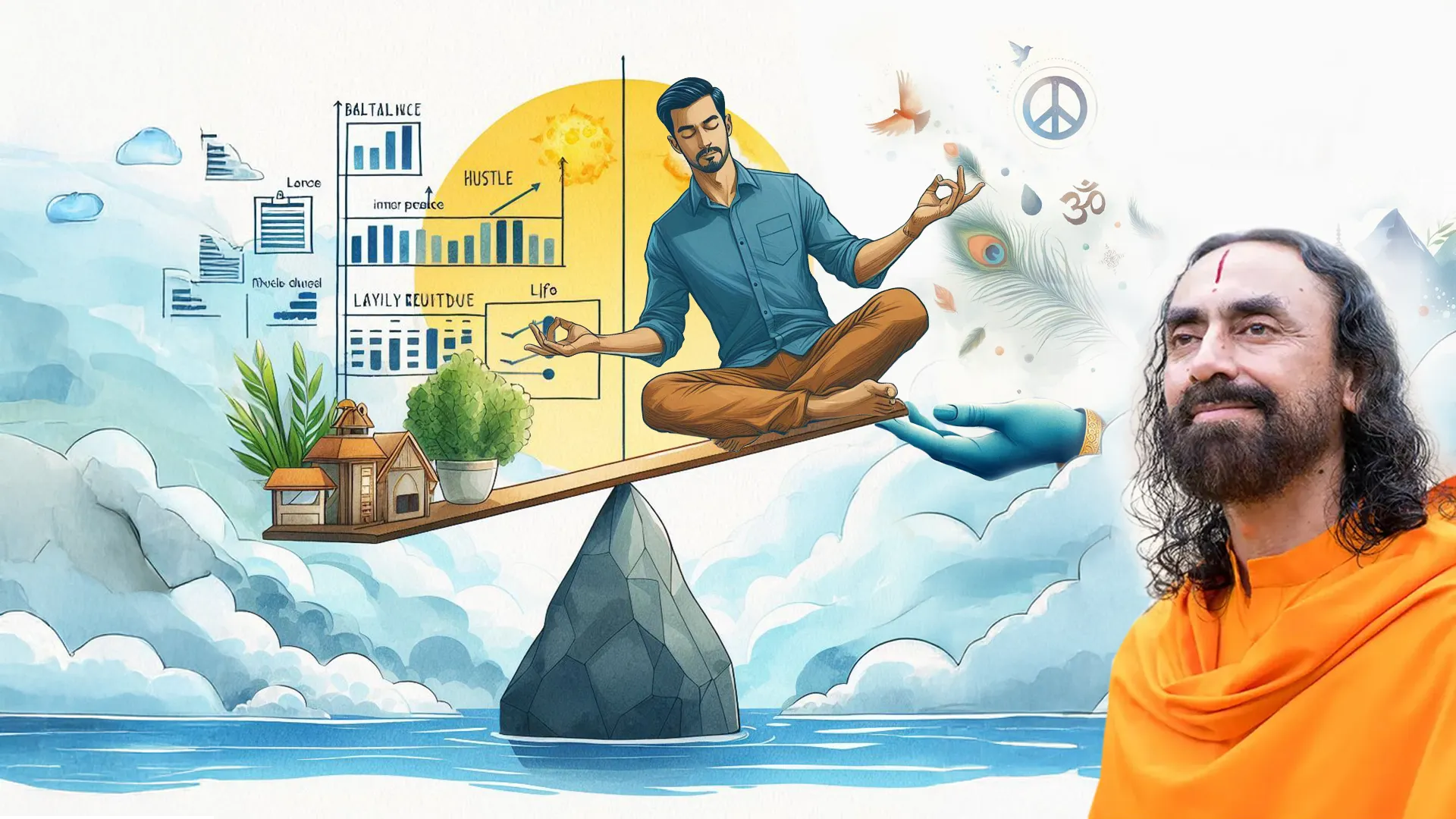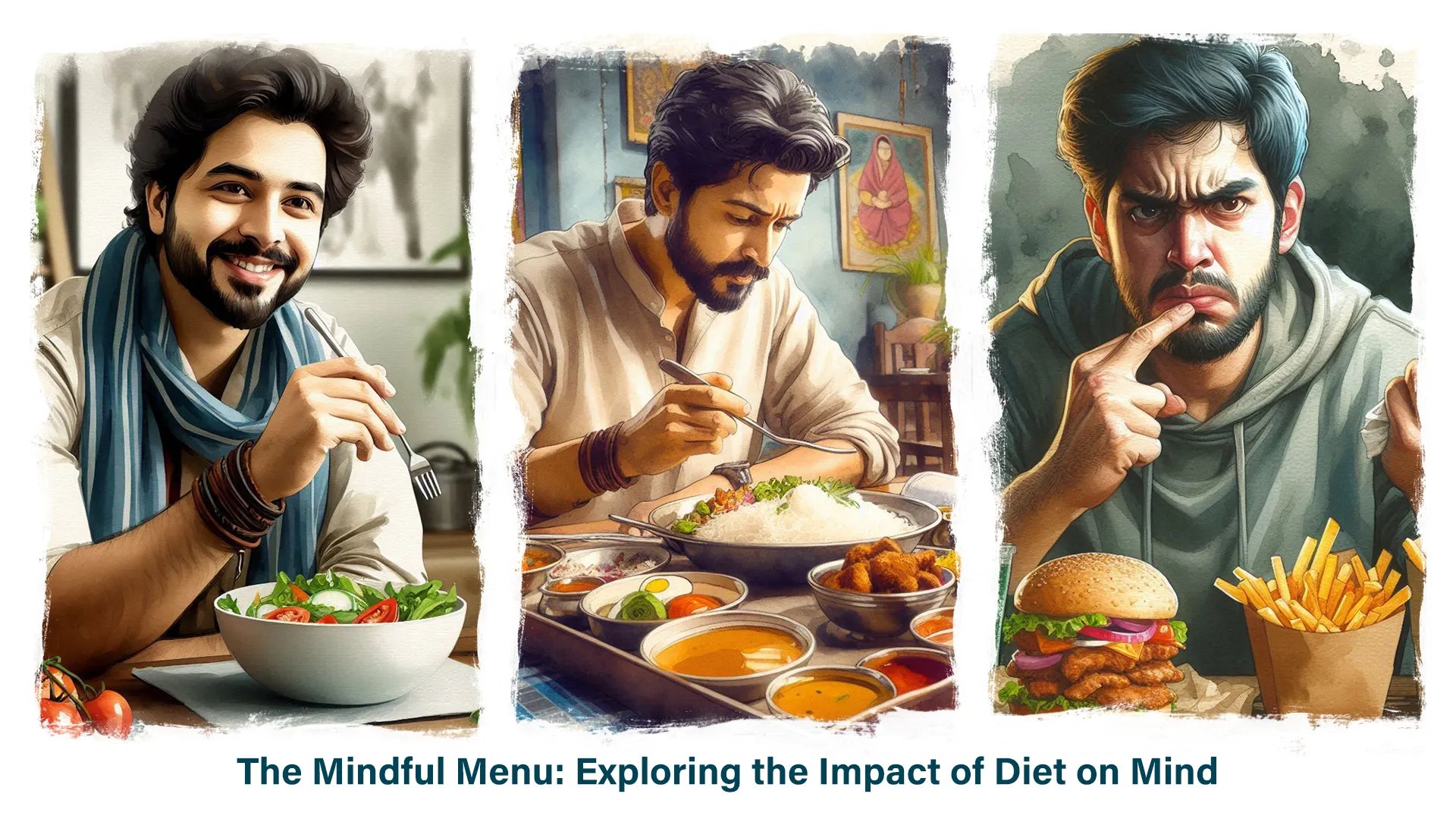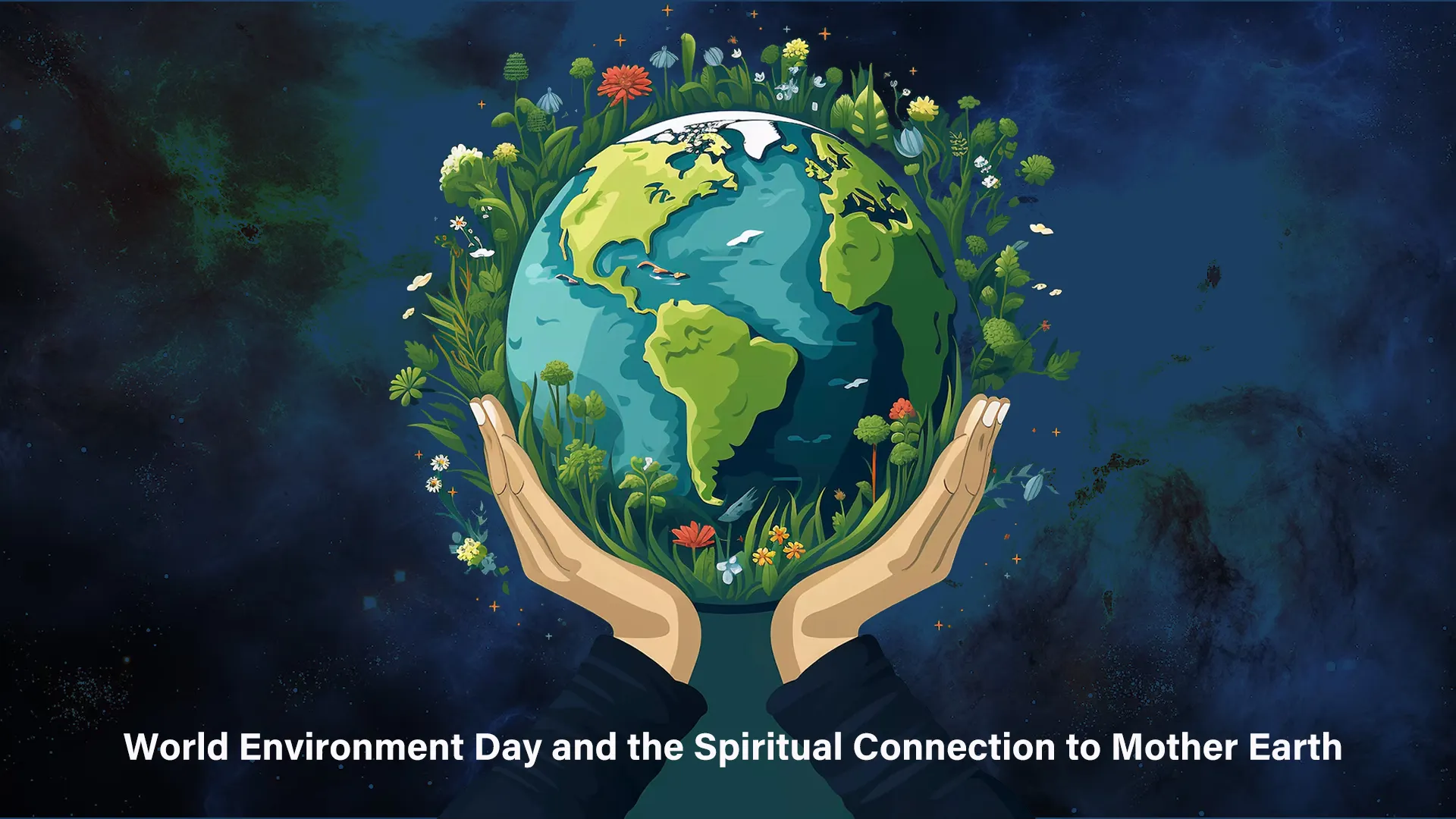Introduction to Yog: Its Origin and Legacy
Sanatan Dharm, more commonly known today as Hindu Dharm, is a vast ocean of spiritual wisdom. Among its many philosophical treasures, the Shad Darshans—the six schools of thought—stand out as foundational. Each was developed by a sage who explored different dimensions of human life and consciousness. One of these, the Yog Darshan, authored by Maharshi Patanjali, has garnered significant global attention. Its appeal lies not only in its profound philosophy but also in its practical techniques for mastering the mind, regulating emotions, and embarking on a deep inner journey toward spiritual elevation.
Before diving into the Samadhi Paad—the first section of the Yog Sutras—it is important to know the remarkable story of the sage behind them: Maharshi Patanjali.
The Divine Descent of Patanjali
According to legend, humanity once approached Bhagwan Vishnu with a heartfelt concern. Despite His incarnation as Dhanvantari, the celestial healer, physical, emotional, and mental ailments still plagued the world. People cried out for deliverance from these inner afflictions that bound them to material existence and kept them distant from divine truth. In response, Bhagwan Vishnu turned to His divine serpent, Anant Shesh—on whom He eternally rests—and instructed him to descend to Earth and address this suffering.
Time passed. One day, as Bhagwan Shiva danced in divine ecstasy, while Vishnu ji, captivated by the beauty of the dance, swayed with joy, causing Anant Shesh to move along with Him. In that moment, Anant Shesh realised that divine expression—like dance—might be a key to healing and joy. He remembered the Lord’s command and prepared to incarnate on Earth.
A noble woman named Gonika, a sage in her final days, prayed earnestly to transmit her accumulated wisdom to a worthy disciple. She offered water in her anjali (cupped palms) to the Lord, pleading for a divine recipient. Suddenly, a tiny serpent appeared in her hands, and in a miraculous instant, transformed into a radiant human child—none other than Patanjali.
His very name reflects this mystical birth: Pata meaning “fall” and Anjali meaning “palm.”
Maharshi Patanjali: Master of Many Sciences
Endowed with divine grace, Patanjali grew into a sage of immense brilliance. His contributions spanned various disciplines. He authored the Mahabhashya, a seminal commentary on Panini’s grammar, though scholars debate whether he was the same as the grammarian Patanjali. He also composed texts on Ayurved and classical dance. To this day, Indian classical dancers revere Maharshi Patanjali before beginning their performance.
Yet, his most transformative work remains the Yog Sutras—a timeless guide to harmonising the body, mind, and soul.
The Yogic Canon in the Vedic Framework
Patanjali’s Yog Sutras are part of the grand Vedic tradition. At its core lie the four Veds: Rigved, Yajurved, Samaved, and Atharvaved. Supporting them are six Vedangs—auxiliary sciences including phonetics (Shiksh), ritual practice (Kalp), grammar (Vyakaran), etymology (Nirukt), metrics (Chhand), and astronomy (Jyotish). The four Upaveds focus on applied knowledge: Arthashastra (economics), Dhanurved (military science), Gandharvaved (music), and Ayurved (medicine).
Adding to this sacred corpus are the Itihas—Ramayan and Mahabharat—followed by the Purans and the six classical philosophies (Shad Darshans), with Yog Darshan being the sixth and final one.
To preserve these deep truths, sages composed them in sutra form—concise, aphoristic threads of wisdom. This brevity made oral transmission practical in times when writing was not widespread. Just as Brahma Sutras, Nyaya Sutras, and Bhakti Sutras were crafted, Patanjali’s Yoga Sutras, too, were written in this elegant, compressed style.
The Four Chapters of Yog Sutras
Patanjali’s Yoga Sutras comprise 196 aphorisms, divided into four chapters:
- Samadhi Paad – On meditative absorption
- Sadhan Paad – On the practice and discipline
- Vibhuti Paad – On the powers attained through yog
- Kaivalya Paad – On liberation and spiritual freedom
The first two—Samadhi and Sadhan paad—contain the essence, the practical and philosophical nectar of yoga. Here, Patanjali weaves material and spiritual wisdom seamlessly. He doesn’t separate the two realms but integrates them, affirming that a healthy mind in a healthy body is essential for spiritual progress.
Perhaps the most remarkable part of his work is his deep insight into the human mind. Patanjali not only identifies its flaws and disturbances but also offers precise remedies for each, enabling us to move from confusion to clarity, from suffering to serenity.
What is Yog?
We now delve into the sacred discipline of Yog. In this world, anything truly worthwhile demands effort and discipline. What comes easily is often of little value; what uplifts us requires commitment.
Let’s understand it through an example: A Lesson from a Kite
During the festival of Makar Sankranti, a father and son were flying a kite together.
“Beta,” the father asked, “what keeps the kite flying high?”
“The wind, Papa,” replied the son.
“No,” the father smiled. “It’s the string.”
“But Papa, the string pulls it down,” the child argued.
“Watch what happens when you release it,” said the father.
“The wind, Papa,” replied the son.
“No,” the father smiled. “It’s the string.”
“But Papa, the string pulls it down,” the child argued.
“Watch what happens when you release it,” said the father.
As soon as the string was let go, the kite spiralled down and crashed.
“You see,” the father said, “it was the string that kept it up.”
“You see,” the father said, “it was the string that kept it up.”
In the same way, discipline is the string that holds us aloft in life. Though it may seem restrictive, it is actually what helps us rise higher. Discipline is the voluntary acceptance of an austerity in pursuit of a higher goal. While it may seem painful in the moment, it brings deep inner fulfilment—when we resist indulgence and control our mind and senses, we feel a quiet strength and peace.
Pleasure can thrill, but it does not fulfil. True fulfilment comes from within—from choosing discipline as a conscious path toward becoming who we are meant to be.
A study in the U.S. once observed:
- Factory workers watch an average of 25 hours of TV a week
- Line supervisors: 20 hours
- Floor managers: 15 hours
- Production managers: 10 hours
- Directors: 5 hours
- Vice Presidents: rarely watch TV
This illustrates that the higher we aim, the more discipline life demands of us. People who achieve more, are more disciplined and focus on long-term fulfilment instead of immediate pleasures.
The Kathopanishad speaks of Shreya and Preya—
- Shreya is the path that is bitter in the beginning but sweet in the end.
- Preya is the path that seems at the moment now, but turns bitter later.
For example, indulging in sweet treats may feel good momentarily. But repeated indulgence can lead to health issues. On the other hand, waking early for sadhana might feel difficult initially, but it nurtures mental focus, physical health, and a deeper sense of joy.
Maharshi Patanjali doesn’t promise entertainment—he offers a path to spiritual upliftment. Through Yog, he gives the knowledge and discipline to help us reach our highest potential.
Is Yog Merely Exercise or a Spiritual Practice?
Yog is not just physical stretching or a form of fitness. It is a sacred spiritual science, handed down across millennia. While modern commercialisation—especially in the West—has reduced it to an industry (worth over $10 billion annually), true Yog transcends mere exercise.
The word ‘Yog’ comes from the Sanskrit root ‘yuj’, which means union—the union of the individual consciousness with the Supreme Consciousness.
Despite being part of one interconnected reality, we feel separate and isolated. But just look at nature: the air we exhale becomes nourishment for trees, and the oxygen they release becomes life for others. We are all profoundly connected, even though we carry distinct individual identities. This is the divine paradox: unity in diversity.
Yog is both:
- A state—the union of our soul with the divine
- And a process—a path of practices that aligns body, mind, intellect, and spirit
These techniques include:
- Asans (physical postures)
- Pranayam (breath control)
- Meditation
- Mantra chanting, and more
Millions across the world today turn to Yog not just for physical health, but for:
- Managing stress
- Finding emotional peace
- Achieving inner balance
- Growing spiritually
This is the true vision of Yog.
Five Life-Changing Benefits of Yog and Meditation
- “Use it or lose it” – The Principle of Movement
Medical science confirms that unused parts of the body begin to atrophy. For example, when a wrist is in a cast for weeks, physiotherapy is needed afterwards to restore movement because the wrist is static without use for a long time.
Yog follows this ancient principle by ensuring that every part of the body—from toes to the eyes—is kept active, preventing stagnation and decline.
Today’s health wisdom even says, “Sitting is the new smoking.”
We are meant to move and stay active. Any sort of static or stagnation will only lead to troublesome results. - Yog Tones Internal Organs
Unlike aerobics, which primarily strengthens muscles, Yog includes twisting, stretching, and compressing movements that stimulate and rejuvenate internal organs—improving digestion, circulation, and detoxification. - Energy Flow and Blockage Removal
Our body holds energy channels (nadis) through which life force flows. Blockages in this flow lead to physical and emotional ailments. Yog, through breath and movement, helps unblock these channels, allowing energy to circulate freely and healing to occur naturally. - Self-Awareness and Intuition
Yog develops a sensitive awareness of your own body. You begin to understand what foods work for you, how much rest you need, and what movement benefits you most. This self-knowledge becomes especially valuable as we age. - Realization of the Subtle Self
Most importantly, Yog awakens us to the truth that we are more than just our body. It opens the doorway to the deeper dimensions of our being—mental, intellectual, emotional, and spiritual. We begin to see ourselves as divine souls on a human journey by helping in the dissolution of our Ego (Our definition of the Self).
Yog can never be separated from Mediation. Hence, it's crucial for us to understand how Meditation Transforms the Mind.
Let’s look at the 3-Step Process
Meditation offers a powerful method to manage negative thoughts and emotions. Here's a simple 3-step process:
Step 1: Dilution
When a negative thought arises, don’t identify with it. Just observe it as a passing cloud. The more you dwell on “Why did I think this?”, the more power the thought gains. So we should let it float away.
Step 2: Substitution
Replace the negative with a positive. For instance, if your mind says, “I am a failure,” immediately affirm,“With effort and wisdom, great things are possible for me too.” Don’t leave the mind empty—fill it with uplifting thoughts.
Step 3: Repetition
Repeat the positive thoughts until they form a stream. The goal of meditation is to establish a flow of divine, noble thinking. With gentle consistency, the mind that once clung to the negative begins to naturally gravitate toward the positive.
Conclusion
Yog is not just about the body—it's a journey of the soul. It teaches us that true freedom comes through discipline, and real joy arises from within. In choosing Yog, we choose clarity, peace, and a deeper connection to the Divine. This is not just a practice—it’s a return to our truest self.








